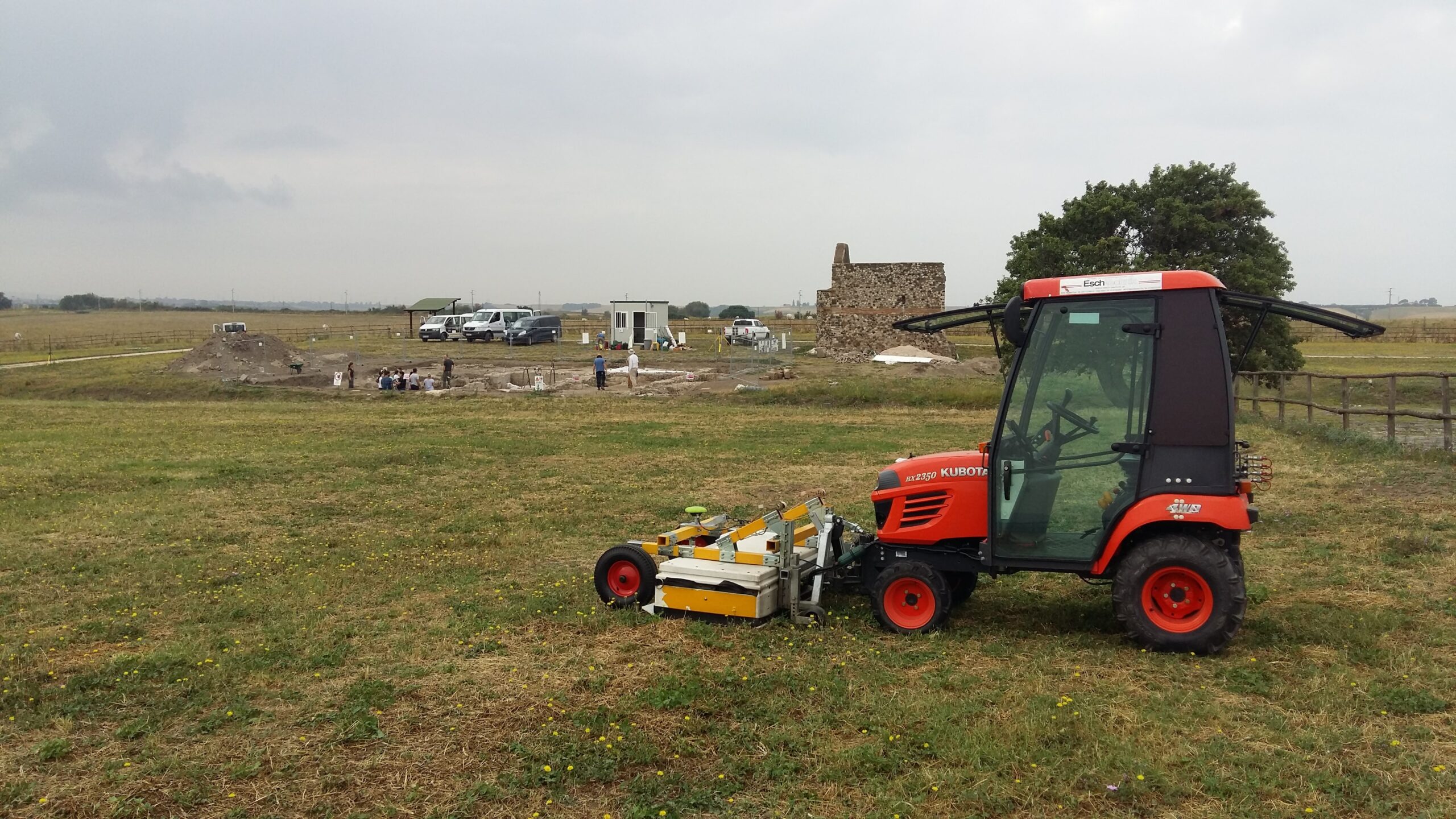Exploring Etruscan cities: LBI ArchPro conducts successful test measurements
In July 2018, a team of the LBI ArchPro together with specialists from its partner ZAMG went to Italy to test the suitability of modern archaeological prospection methods for the large-scale investigation of Etruscan cities. Motorized ground-penetrating radar measurements with different systems for extensive surveys and complementary near-surface geophysical prospection methods were used at Vulci, Cerveteri and Tarquinia, to evaluate their potential for the large-scale exploration of the Etruscan cities that have existed there.
On invitation of Prof. Maurizio Forte from Duke University, North Carolina, who with his team is excavating in the central area of the city in the framework of the Vulci 3000 project, we were able to conduct successful prospection surveys in the archaeological park of Vulci. At Cerveteri, test measurements were conducted in the urban area as well as in the Necropoli della Banditaccia, in collaboration with Prof. Fabio Colivicchi from Queen’s University in Kingston, Ontario, Canada. At Tarquinia, where Carlo Maurìlio Lèrici already pioneered prospection methods in the 1950s, a small test with motorized and manual GPR measurements was conducted with kind support of Prof. Attilio Mastrocinque from the University of Verona, who is leading an excavation in the area.
Our team tested different motorized GPR systems (a 16-channel 400 MHz MALÅ Imaging Radar Array; a 6-channel 500 MHz SPIDAR system; a 4-channel 250 MHz SPIDAR system) for high-resolution archaeological prospection of large areas, as well as special low frequency GPR antennae, electrical resistivity tomography and refraction and surface seismic measurements, suited to image at greater depth and to address specific questions.
The first analysis of the collected data is very promising. Not only the exiting archaeological results gathered in a picturesque landscape, but as well the outstanding Italian cuisine demand for more detailed, extensive studies. We hope to be able to return to these hospitable places soon.
(Photos: LBI ArchPro/Immo Trinks)




